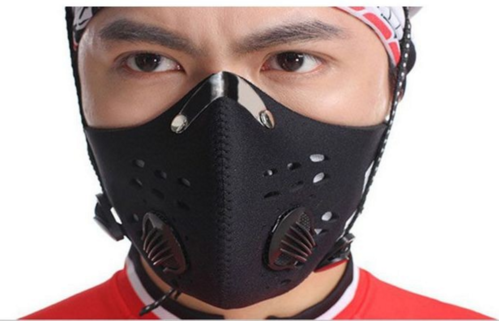
Are you trying to learn about what a pollution mask is? Are you wondering whether or not you should wear one when you’re outdoors?
In premise, an anti-pollution face mask serves as a barrier between your breathing and the harmful particulates that are flowing through the air. These particulates are always present, however, they can also reach life-threatening levels in the cases of wildfires, and smog.
In this article, we will cover some of the most important faculties of a pollution mask. By doing so, you will be able to determine what is right for you.
So if you want to make an educated decision, keep reading to learn more.
Air Quality Index: An Important Factor
First and foremost, you’ve probably heard of the Air Quality Index. But what actually determines its value?
Well, it’s quite simple. There are specifically 6 outdoor pollutants that are being evaluated to determine the AQI. But the most potent of the pollutants is a particulate matter which can be quite dangerous as the level of its presence rises.
It is not easily digested within the body and can enter the bloodstream. When the level of particulate matter reaches overbearing levels, it’s more than recommended that people wear masks when doing anything outdoors.
On that note, what AQI constitutes the importance of wearing a mask. Well, that depends on a variety of things, not to mention each country uses its own scare.
In accordance with the World Health Organization, the safest presence of particulate matter in any one-day time frame is 25 ug/m3. On the AQI scale, this is a value of 30. However, this number can be different for other countries. Any more exposure to this value or greater over a period that lasts longer than one-day can lead to serious respiratory issues.
Wearing a mask is recommended by governments when the AQI value is beyond 200, and/or the concentration of particulate matter exceeds 140 ug/m3. This creates a very confusing situation, as this advice differs on a premise of 6 times more than the standards placed by the WHO.
For instance, an AQI value of 100 in China would be categorized lightly polluted. However, that same value in the US would be categorized as unhealthy for sensitive individuals.
In any case, you’ve gathered that each organization tends to assign their own AQI values, and that’s important. Who are you going to trust?
Trust the WHO
Well, it’s recommended that you follow the advice set out by the WHO. They make use of intricate research that analyzes long-term exposure to particulate matter. When following their advice, you should be wearing a mask when the AQI score is beyond 50.
If you’re looking for a more flexible approach, you can make use of the US scale. However, if you’re interested in safety, you might as well go with the values set by the WHO.
For many people, this can mean that they should be wearing a mask each and every day, especially in South East Asia. And that can be difficult, not to mention very inconvenient.
Is a Pollution Mask Worth It? How Does It Work?
To solve the problem of AQI, or better yet create a necessary barrier between unhealthy AQI and the individual, a pollution mask is used.
There are many short-term concerns caused by particulates, such as throat, nose, eye, and chest infections, as well as shortness of breath, cough, runny nose, and sneezing. However, regular exposure to these particulates will cause severe respiratory conditions, such as heart disease, asthma, and sometimes cancer.
If particulate matter is regularly consumed, they begin to adhere to the lower and upper respiratory tract. The lungs have to work overtime to attempt and remove them.
To prevent this, a mask with a sub-micron filter can help to remove the majority of these particulates. However, they will be voided useless if they are not snug around the face.
Nonetheless, not all particulates will be filtered out. Most masks, especially cheap ones cannot filter the smallest particles in the air, and these are the ones that are considered to be the most harmful to our health. One can protect themselves even more by avoiding rush traffic, taking back streets, and evacuating areas under environmental danger, such as wildfires.
If you have any lung condition, medication should be with you at all times. Also, polluting alerts are a great thing to have, as the will ensure you know when pollution is at its worst.
The most common mask available to the general population is N95. It removes about 95% of non-oily particulates, not filtering out matter below 0.3 microns. It’s intolerant to oil, and should not be used in such conditions.
They have been used in thwarting the spread of diseases, such as avian flu, swine flu, influenza, and tuberculosis. They are also often used in morgues, hospitals, and labs. If you’re looking for a one-off solution, check out this best pollution mask for exercise and outdoor activity.
Pollution Begone
Now that you know what AQI is, as well as how a pollution mask can help you maintain your health, you are well on your way to deciding if a mask is right for you. In some cases, it’s just not an option, it’s a necessity and you should not think otherwise.
If you find that you are in a location under stressed environmental conditions, ensure that you are safe and free from harm’s way. Then and only then worry about buying a pollution mask.
If you’re interested in similar articles, feel free to check out our health-related categories.